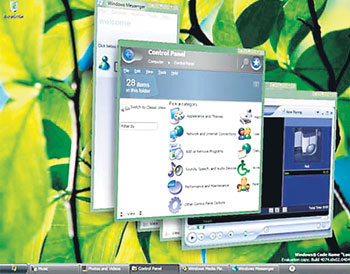
Stretching the techy reach1.Taking a glance at the three billion pages of the Web – It is not just the huge number of pages that is the problem, but also the disorganised state of the Web. 2.Isolating a few thousand pages of the Web, which are worth looking at – The technology for clearly spelling out the content of a page is only just developing.
3. Analysing three billion base pairs in the human DNA – Having a sequence of letters is certainly not useful, unless we have some idea of the language used. 4. Isolating the estimated 30 thousand human genes from the DNA sequence – The importance of this is obvious, since the genes decide the physical and mental characteristics of human beings. 5. Understanding the functions of all the human genes – Functions of more than half the discovered genes remains unknown. 6. Making six billion people literate and providing at least an elementary education – In the world today, it is even more important to be technically literate. 7. Designing e-learning management systems for the Web to ease the burden of tutoring six billion people. 8. Looking at the individual atoms of the protein molecule to learn about the mechanism of protein folding. 9. Peer-to-peer computing, to ease the computational complexity of problems like protein folding. 10. Developing database management systems that can deal with the terabyte databases that are mushrooming on the Web. 11. Developing a theory of search engines to make a judgment on the quality of three billion Web pages. 12. Developing standards for the metadata in Web pages to provide more clarity for the content. 13. Using the vast resources of the Internet for social functions like voting, so that election results will not be left dangling. 14. Developing a theory of voting to circumvent inherent problems like Arrow's paradox – The paradox says that democracies are not possible with the current voting systems. 15. Developing exemplary core courses for higher education, so that the same courses can be taught around the world through the Web. 16. Developing an exemplary course management system and making it free so that the delivery of courses will be uniform throughout the world. 17. Developing a comprehensive course archives network for the free use of the Web community, so that all courses can be accessed anytime, anywhere using a common course management system. 18. Developing wireless communications software so that the mobile computer can transform itself into a home computer or office computer. Note that there is commercial software available which will transform a home computer into an office computer or vice versa. 19. Publishing mathematics on the Web – Even though there has been attempts to enhance HTML to make it suitable for mathematics, the real choice we have is only the TEX typesetting. Note that it is possible to have hyper referencing in TEX. Broader Vistas
The corporate world was suspicious of Windows Vista, the successor to Windows XP, when it made a late arrival in the market in January 2007, as it usually is, of Microsoft's Operating Systems as they make their hasty entries into the shop shelves. But having passed its 15th month under their scrutiny, and a confidence boost that came with the release of its first service pack, experts predict that Vista will win the hearts of CIOs. Gartner research says the initial wave of migrations to Vista will start from the second half of the year, before it hits the mainstream enterprise computing circuit in 2009. Vista accounts for just under 30 per cent of the 102 million new computer software licences sold into the enterprise market during the 11 months to December 2007. However, it has not been quite as successful in gaining business acceptance as Windows XP was during its first year in the market. Improve your computer literacy Business Intelligence (BI)
Most companies collect a large amount of data from their business operations. To keep track of that information, a business would need to use a wide range of software programs, such as Excel, Access and different database applications for various departments throughout their organisation. Using multiple software programs makes it difficult to retrieve information in a timely manner and to perform analysis of the data. The term Business Intelligence (BI) represents the tools and systems that play a key role in the strategic planning process of the corporation. These systems allow a company to gather, store, access and analyse corporate data, to aid in decision-making. Generally these systems will illustrate business intelligence in the areas of customer profiling, customer support, market research, market segmentation, product profitability, statistical analysis, and inventory and distribution analysis to name a few. |
|
||||||
|| Front
Page | News | Editorial | Columns | Sports | Plus | Financial
Times | International | Mirror | TV
Times | Funday
Times || |
| |
Reproduction of articles permitted when used without any alterations to contents and a link to the source page.
|
© Copyright
2008 | Wijeya
Newspapers Ltd.Colombo. Sri Lanka. All Rights Reserved. |


